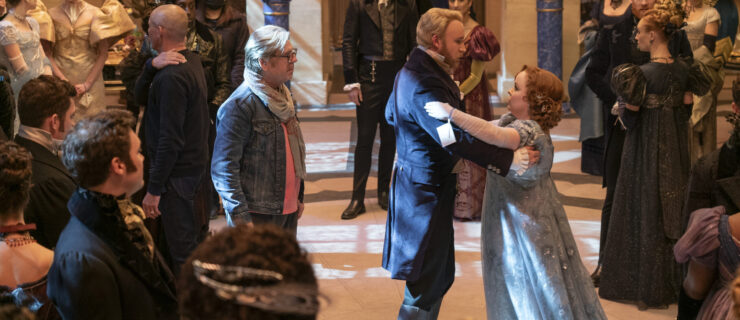How to Nail a Spoken-Word Piece in Competition
When Shannon Mather choreographed Body Love on a group of dancers from her Mather Dance Company, a video of the work was so popular that it ended up going viral, garnering over a million views on YouTube. Set to a spoken-word poem by Mary Lambert on themes of body image, unhealthy beauty standards, and self-confidence, the piece resonated not only with competition judges (who placed the piece in the top three at Hall of Fame Dance Challenge), but also with the teenage dancers in the cast. “It spoke a lot to girls,” Mather says. “I got so many messages.”
Dancing to spoken word can be incredibly powerful, and help you stand out in a competition. But it comes with its own set of challenges, especially if you’re used to having music backing you up. Here’s what you need to know if you’re thinking about tackling a spoken-word piece.
Get Personal
“In order to make spoken word come across, you as the dancer need to really believe in what’s being said,” says Mather, who also teaches and judges at Velocity Dance Convention. When choosing your text, find something you connect with and a topic you’re passionate about—and make sure it’s age-appropriate. “The dancer needs to be mature enough to take on whatever it is the lyrics are about,” says Melissa Sandvig, a ballet teacher and judge at Velocity.
 Shannon Mather teaching at Velocity Dance Convention (courtesy Velocity Dance Convention)
Shannon Mather teaching at Velocity Dance Convention (courtesy Velocity Dance Convention)
When Carrie Nicastro Ruiz, director of contemporary and modern at Steps Dance Center in Aurora, IL, choreographed a spoken-word piece on one of her students last year, the two sat down at the beginning of the process and talked through different interpretations of the poem. Though the dancer didn’t necessarily relate to the experience of lost love it described, she did connect with some of its themes. “I asked her, ‘Have you ever regretted something?’ ” says Nicastro Ruiz. “I think it’s important for the dancer to either feel like they can relate directly to the story, or relate to something else in their life that is similar.” She recommends spending a good amount of time listening to the text on your own to get familiar with it.
Some dancers also record themselves reading original poetry. This can be very effective, but Brooke Lipton, a teacher and judge at Hollywood Vibe, stresses the importance of a high-quality recording. If the judges can’t understand the words, they’re missing half of your message.
Musicality Still Applies
Without music, you may feel more raw and exposed onstage—but a text-based score can also give you the chance to let your artistry shine. “It definitely challenges dancers’ acting ability and stage presence, because they’re the ones interpreting the words,” Sandvig says. Just like you would with music, think about the tone of the speaker’s voice and the overall arc of the piece, and move accordingly. “You’re going to need a lot of different textures, a lot of ups and downs and dynamics, to keep the piece interesting from beginning to end, or it can get flat,” Mather says. Sandvig adds that this is your chance to get creative. “Since there is no music, you can create whatever accents and dynamics you want,” she says, “which can open up more opportunities for expression.”
 Melissa Sandvig teaching at Velocity Dance Convention (courtesy Velocity Dance Convention)
Melissa Sandvig teaching at Velocity Dance Convention (courtesy Velocity Dance Convention)
Be a Storyteller
Ultimately, “it’s about going out there and taking the words and becoming that poet,” Lipton says. Sandvig emphasizes that the words and the choreography should feel connected, “so it doesn’t look like just movement on a stage.” Lipton also cautions that, for judges, it can be challenging to keep up with both the words and movement, as the piece goes by fast. “We’re watching a number for the first time, so sometimes we’re playing catch-up just trying to listen to what’s being said, and see the storyline play out,” she says. That means it’s even more important to bring out the emotional tone of the poem in your dancing.
 Katie Kim competing her solo “Incomplete” at Hollywood Vibe (photo by Take Creative, courtesy Hollywood Vibe)
Katie Kim competing her solo “Incomplete” at Hollywood Vibe (photo by Take Creative, courtesy Hollywood Vibe)
Mather advises finding a balance between moments that are more chaotic and movement-dense, and times where you can keep it simple and let key lines in the poem stand out, so the audience doesn’t miss them. “I always tell my students to think of it as a movie,” she says. “You never want to watch a movie that’s too crazy, but you also don’t want to watch one that never goes anywhere.”
A version of this story appeared in the October 2018 issue of
Dance Spirit with the title “Poetry in Motion.”



